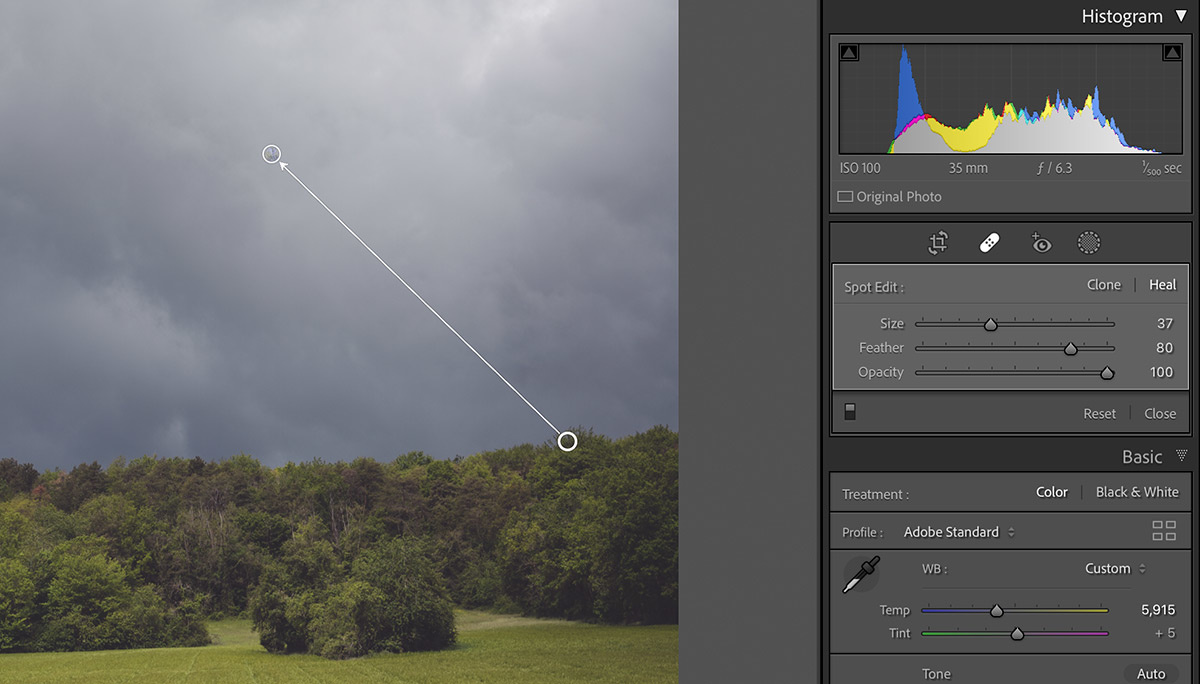Artificial intelligence is bringing incredible advances for photographers, from relighting portraits and making people smile, to cleaning up skin and swapping out skies. However, photographers everywhere would beg developers of photo-editing software to harness deep learning to create one simple tool.
Mirrorless cameras have meant some significant technological leaps for photographers: live histograms, smart autofocus, and silent shooting, to name but a few. One disadvantage, however, is that without that handy mirror hiding your sensor every time you change the lens, you tend to collect dust, not helped by the fact that the static charge on the sensor itself acts as a magnet for small particles. A few manufacturers hide the sensor with the mechanical shutter when the camera is powered off, but once the mechanical shutter becomes completely obsolete (three years? Five years?), this problem is going to return. Shooting in dusty environments can be a nightmare.
Every photographer’s bane is sifting through countless raw files and removing spots of dust. The healing tool in Lightroom can be painfully slow and if you’re editing raw files from a relatively new camera boasting upwards of 30 megapixels on a machine that’s more than a couple of years old. Click. Wait. Stare in disbelief at the inexplicable choice Lightroom has made when choosing where to sample from. Show pins. Drag the source pin to somewhere less insane. Wait. Click. Wait. Repeat.

No, Lightroom. Just no.
To deepen your frustration, Lightroom has a handy feature that can help to reveal dust spots but this just emphasizes the struggle. “Here are your dust spots,” Lightroom declares gleefully. “Have fun with those. Hope you don’t have anything important to do.”
What mystifies me is that this is a universal problem that has plagued us since the very first digital camera with an interchangeable lens, and yet, engineers seem more interested in giving someone an unsettlingly weird smile or letting landscape photographers awkwardly fake golden hour than solving a simple problem. My disclaimer: I know very little about artificial intelligence, but I feel confident in saying that if a machine can be taught to identify someone’s lips, nose, and eyes, a dust spot should not present too much of a challenge. And if we can swap an entire sky, patching tiny blobs across a batch of images doesn’t seem like a big request.

Thank you, Photoshop. Very useful.
Here’s my dream: I get home from a day’s shooting in the mountains and import some images into Lightroom. As part of the import process, I click a box that says “detect and remove dust,” and as Lightroom copies and processes the files, it finds every speck of dust and eliminates them using the healing tool. If it’s not sure, it flags the images and asks me to approve or tweak its changes. Sorted.
As I pondered my dream, I stumbled upon one of the features touted by Skylum for the forthcoming Luminar Neo, its new photo manipulation software that’s due to launch, well, soon, appeared. My prayers may have been answered, but if you’ve ever wondered if Luminar software is suitable for serious photographers (whatever they might be), the promo video from Skylum might offer you an answer:
I’m not about to ditch Lightroom, not because I think Lightroom is the best, but because I’m too lazy to change, both in terms of moving my catalog and the long process of learning to use new software. Given that Luminar has been keeping Adobe on its toes in the last year or so, I’m hoping that automatic dust removal might come to Lightroom shortly. Failing that, I’m wondering if DxO PureRAW might soon gain such a feature. Like a few other non-Adobe brands, its use of deep learning is innovative, and if Adobe isn’t keen to add this technology anytime soon, paying a one-off fee for software that pre-processes your raw files ahead of editing in Lightroom could be a nice solution.
Should developers have given us AI-powered dust removal long ago? Who will be the first to offer this feature and how much would you be willing to pay for it? Let me know in the comments below.







The casual observer has no idea how quickly this stuff is developing.
As much as this might be a desirable feature, why would you care whether it is "AI" powered, or somebody managed to come up with a good algorithm? I think a decent algorithm would be much more preferably to a lazy AI approach to just through data at it and see what sticks 🤷♂️
Although i guess it is good for seo 🙄
What about Something like Canon's dust delete data?
Canon has a feature in most of its cameras that allows you to acquire a "photo" against a white background that maps the dust spots on the sensor and then appends that data to images shot thereafter. It only works with Canon cameras, of course, and with their DPP photo processing software. I've also not found it overly accurate. But ...
What if Adobe or other photo software developers allowed us to take such a shot (High f/stop, shot at a white background close to the camera, distance at infinity), which would show just dust spots, and designate the image a "dust reference shot," and use it to map spots in the shoot images, and have the software remove them automatically. It wouldn't require AI to identify the spots. The reference photo could be updated at any point (before a shoot or even during one). Surely with the identification of spots taken care of Adobe engineers could easily figure out a way to perform automatic context-aware removal of the dust spots in the images.